Council looks to update MEWP best practices docs
16 September 2024

Just a little over two years ago, the Scaffold & Access Industry Association’s (SAIA) Mobile Elevating Work Platform (MEWP) Council appointed Tony Groat as its new Chair.
Groat, who is the North American regional manager for the International Powered Access Federation (IPAF), has been in the construction equipment industry for more than four decades, including 31 years in the equipment rental industry and more than a decade and a half with IPAF. He is a recognized industry expert and has been directly involved in the development of MEWP industry standards, including ANSI/SAIA A92 and CSA B354. He is also a technical expert for the U.S. on ISO TC214 standards.
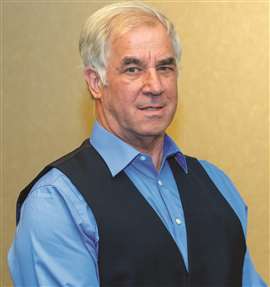 Tony Groat.
Tony Groat.
As the MEWP Council Chair, Groat has been working with the Council over the past 24 months on impactful changes for the industry, including complete revisions of some now-outdated industry best practices documents.
“The SAIA Mobile Elevating Work Platforms (MEWP) Council mission is to promote Safety Awareness in compliance with ANSI/SAIA A92 MEWP standards through a more informed access industry,” Groat says. “While many users are locked into OSHA compliance only, industry standards are really the ‘how to be complaint with OSHA requirements for MEWP worker safety.’ This council will champion the specific needs and requirements for all its stakeholders including manufacturers, dealers/distributors, owners, employers, users, operators, regulators and educators.
Our main goal is to take a leadership role regarding issues facing the industry that will ultimately benefit the entire industry by elevating discussion and awareness.”
SA sat down with Groat recently to see where the Council stands, and what’s to come.
SA: Over the past 12 months, what has the MEWP Council been actively working on?
Groat: One of our key committee’s key projects is the updating of industry best practices for MEWP operator training, performing site risk assessments, and guidance on fall protection for MEWPs.
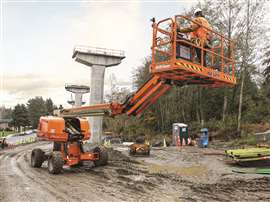 (Photo: JLG)
(Photo: JLG)
These three best practice documents offer some easy-to-understand guidance and recommendations for users of MEWP to follow in their compliance with these topics.
These best practice documents were initially published in 2010-11 and were focused on key issues the industry identified at that time. Since they were published, new ANSI/SAIA A92 standards were also published, and they have added new requirements and while some industry issues continue, we must address different issues that we face today.
While equipment design standards provide more options and safety, there is equally a need for users to improve their practices to ensure all work is both more productive and operations are safer.
SA: When did the work start?
Groat: The work began in January of this year with the initial work specifically focusing on the Statement of Best Practices of General Training and familiarization for Aerial Work Platforms.
While the SAIA MEWP council took the lead on this project, for it truly to be an industry best practice, we needed to join again with American Rental Association (ARA), Association of Equipment Manufacturers (AEM) and IPAF to have the unified voice of the industry to be heard.
All agreed that there is a need to update these best practices, so the work began at the end of Q1. It is the intent to work on one statements of best practice documents through completion before work begins on the next.
SA: Why was this chosen over another topic?
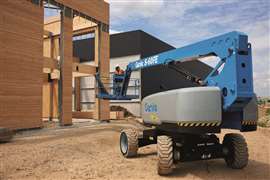 (Photo: Genie)
(Photo: Genie)
Groat: The statement of best practices have been on all of the partnering Associations website as well as many of their members. While the existing documents have great value, the need to align with today’s standards and best practices has been expressed for many years. It was time to pick up the torch and lead the project forward. These statement of best practices are still the foundation for key issues for MEWP users and operators today.
SA: What is the deadline for completion/where does the project stand?
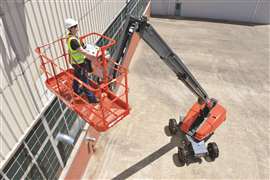 (Photo: Skyjack)
(Photo: Skyjack)
Groat: Today it seems like everyone has a full plate with their primary job and allocating time to work on outside projects is increasingly a challenge for people’s time.
That said, the working group members are committed to getting these reviewed, updated and republished. We hope to have the first statement of best practice, now renamed as the Statement of Best Practice of Operator Qualification and Requirements for Training, Familiarization and Retraining for Mobile Elevating Work Platforms (MEWPs), will be ready to republish in Q1 2025.
As the change of title indicates, the best practices will expand from the initial publications, layout and artwork updated, but will maintain the format of being concise, easy to read, and relevant.
We hope to condense the process for the remaining two Statement of best practices and get both completed by end of 2025.
SA: Looking forward, what will the Council be focusing on in the coming year?
Groat: As indicated earlier, we will keep our focus on moving the statement of best practices to completion in 2025. I add that we are considering the need for new best practices documents, such as a statement of best practices of rescue plans for mobile elevated work platforms.
SA: Will we see any changes to the Council in next year?
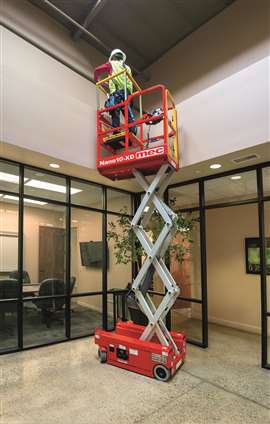 (Photo: MEC Aerial Work Platforms)
(Photo: MEC Aerial Work Platforms)
Groat: No plans for changes at this time.
SA: Are there any upcoming changes to standards/regulations that will impact the Council? If so, what are they? And what are the impacts?
Groat: As the best practices must be aligned with ANSI/SAIA A92 MEWP standards, changes to the standards will impact the all industry stake holders.
This is critically true for MEWP users and operators who are not fluent with industry standards, or when and how they affect them. It is possible that some of the ANSI/SAIA A92 MEWP standards will be republished some time in 2025, so the committee will plan, when that does occur, to implement an awareness campaign to assist users and operator meet their responsibilities
SA: What would the Council like to relay to readers of SA Magazine?
Groat: Our number one message is that you are invited to be part of this committee and share your experience, knowledge and opinion into the work we are doing to meet our mission to promote safety awareness in compliance with ANSI/SAIA A92 MEWP standards.
We have the ability to help educate those using MEWPs to be more effective at completing their tasks and be safe in the process. That’s not a bad return on your investment.
SA: Any additional items or news we should be aware of?
Groat: While I have spoken about one key project this committee is working on, there is more taking place. As an example, we have delivered multiple educational webinars (over 10 hours) to OSHA personnel in one of 10 of their regions this year.
The webinars focused on safe use practices and hazard management addressing OSHA’s Fatal Four (falls, electrocution, struck-by, caught-between) specific to MEWPs and MCWPs. These were recorded and will be used for viewing on OSHA regional across the US.
STAY CONNECTED



Receive the information you need when you need it through our world-leading magazines, newsletters and daily briefings.
CONNECT WITH THE TEAM








